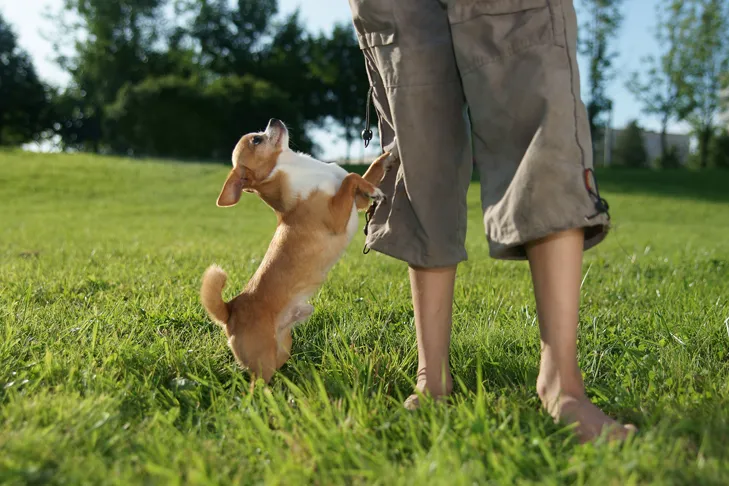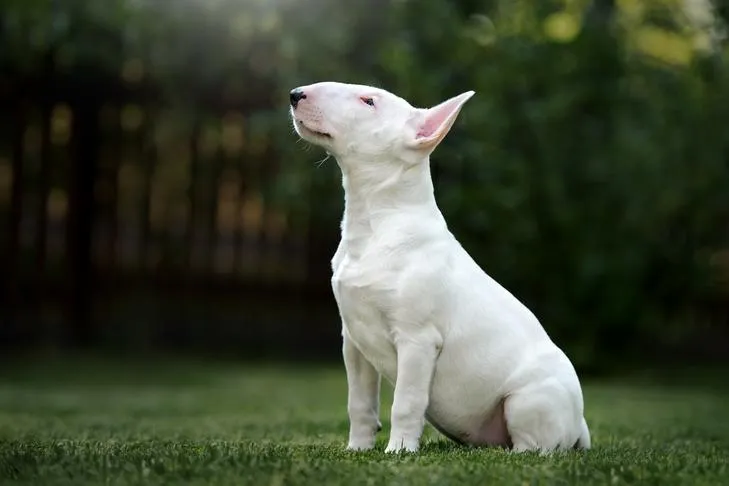For many dogs, jumping up on people is a natural and enthusiastic way to greet them, a face-to-face hello that guarantees attention. However, this seemingly innocent canine behavior can be annoying, inconvenient, and even dangerous from a human perspective. Muddy paws can soil clothing, and larger dogs can easily knock over children, seniors, or anyone unprepared for their exuberance. Teaching your dog an alternative, more polite greeting is crucial for their safety, the safety of others, and fostering a well-mannered companion. This guide will provide expert insights and practical steps on how to effectively teach dog to not jump on people and ensure they greet everyone appropriately.
Understanding Why Dogs Jump
Dogs are highly intelligent creatures that repeat behaviors that bring them rewards. When a dog jumps up, they are often seeking attention, which is one of the most powerful rewards for many pets. Family members, visitors, and even strangers can inadvertently reinforce this behavior. Even negative reactions, such as yelling, pushing them away, or grabbing their paws, can be perceived as a form of attention or an engaging wrestling game by the dog, thereby reinforcing the jumping.
To effectively eliminate jumping from your dog’s greeting habits, it’s essential to remove the associated rewards. This involves both managing your dog’s environment to prevent opportunities for jumping and teaching them a more appropriate and acceptable way to greet people. This dual approach ensures your dog learns what to do, rather than just what not to do, leading to lasting behavioral change. Addressing behaviors like this early can prevent more significant challenges, especially when considering stopping your puppy from jumping from an early age.
 A small dog eagerly jumping up, seeking attention.
A small dog eagerly jumping up, seeking attention.
Training Alternative Greeting Behaviors
While ignoring a jumping dog might theoretically lead to the behavior’s cessation due to lack of reward, it can be frustrating for the dog if they don’t understand what they should be doing instead. Consistency from everyone they encounter is also nearly impossible. Therefore, actively teaching an alternative, desirable greeting behavior is the most effective approach.
The specific alternative behavior is up to you. You might prefer your dog to simply keep all four paws on the floor, or you might prefer them to sit or lie down politely when greeting someone. The key is to clearly communicate what the desired action is, making “sit” for greetings a much clearer rule than simply “don’t jump.”
How to Train ‘Four on the Floor’
The “four on the floor” technique focuses on preventing your dog from jumping by rewarding them before they even have a chance to leave the ground. The goal is to associate keeping all four paws grounded with positive attention and treats during greetings.
Here’s a step-by-step guide:
- Preparation: Have your dog on a leash. Ask a friend or family member to act as the greeter.
- Anticipate and Reward: As the greeter approaches your dog, before your dog shows any signs of jumping, toss several high-value treats on the floor in front of them.
- Engage and Reward: While your dog is focused on eating the treats from the floor, have the greeter calmly pet and greet them.
- Disengage: Before your dog finishes eating, have the greeter turn and walk away.
- Repeat and Extend: After several repetitions, repeat the steps, but gradually extend the greeting period, continuously tossing treats on the floor to keep your dog engaged and grounded.
- Fade the Lure: Once your dog consistently keeps all four feet on the ground, you can begin to let them greet the person before you place the first treat. The greeting itself starts to become part of the reward.
- Transition to Natural Reward: Gradually reduce the number of treats until the polite greeting and the resulting attention from the person are the only rewards needed.
The success of this technique hinges on your ability to anticipate your dog’s jumping behavior and provide the treats before it occurs. If you’re too late and your dog jumps, immediately have the greeter turn and walk away, and you should stop providing treats or attention. Over time, your dog will learn that keeping all four paws on the floor earns them positive attention and treats, while jumping results in no reward. This method is effective for various scenarios, including preventing dogs from jumping on visitors at home.
 A Bull Terrier puppy sitting calmly in a yard, looking up attentively.
A Bull Terrier puppy sitting calmly in a yard, looking up attentively.
How to Train ‘Sit’ for Greetings
Teaching your dog to sit for greetings is another excellent way to establish polite behavior. This method teaches your dog that a seated position brings attention and interaction, whereas standing up will cause the attention to cease.
Follow these steps to teach your dog to sit for greetings:
- Controlled Environment: Tether your dog’s leash to a secure anchor like a doorknob or a sturdy piece of furniture.
- Practice with You: Stand a few feet away and ask your dog to “sit.” If they comply, calmly approach, praise, and pet them. If they stand up, immediately turn and walk back to your starting point, ending the interaction. Only resume petting if they remain seated. As soon as they stand, the interaction ends.
- Increase Excitement: As your dog understands they must sit to receive your greeting, gradually make your approaches more exciting (e.g., more energetic voice, slightly faster movement) to mimic real-life greeting scenarios.
- Introduce Others: Once your dog reliably sits for greetings with you, repeat step one with friends and family members, ensuring they follow the same rules of only greeting a seated dog.
Remember, consistent practice of the “sit” command in various environments and with different distractions will make this exercise much easier. If your dog still struggles with basic sits, focus on strengthening that command first. Making “sit” a default behavior—asking them to sit before meals, before going outside, or before receiving a toy—will help reinforce it as their go-to polite response.
 A Beagle sitting calmly inside its open crate, demonstrating good behavior.
A Beagle sitting calmly inside its open crate, demonstrating good behavior.
Preventing Jumping While You Train
While actively training your dog, it’s equally important to manage their environment to prevent them from practicing the unwanted behavior. Every time your dog jumps and is rewarded (even with negative attention), the behavior is reinforced.
Here are some management strategies:
- “Place” Command: If your dog has a strong “go to your place” cue, you can send them to their mat or crate whenever the doorbell rings or guests arrive. This keeps them out of the immediate greeting zone until they are calm and ready to interact appropriately.
- Physical Barriers: Utilize a dog gate at your entranceway to prevent your dog from directly accessing visitors upon arrival. This allows your dog to see and hear guests without having the opportunity to jump.
- Leash Control: Keeping your dog on a leash when guests are expected can provide you with immediate control to guide them into a sit or “four on the floor” position, preventing jumps.
- Distraction Tools: Keep a stash of engaging toys or treats near your front door. You can toss a treat or toy away from the doorway to occupy your dog as your visitor enters. Alternatively, your guest can use the treat or toy to reward your dog for a polite, grounded greeting.
- Managing Outdoor Greetings: Preventing jumping can be particularly challenging when walking your dog, as you can’t expect strangers to know or follow your rules. Until your dog consistently greets friends and family appropriately, try to avoid having them greet strangers. Instead, use a “watch me” cue or squeak a toy to get their attention and allow the stranger to pass without interaction. For energetic breeds like a Bernese Mountain Dog, managing common Bernese Mountain Dog behavior problems often involves proactive prevention and consistent training from a young age.
- Educate Others: When your dog is ready to greet people in public, clearly communicate your training procedure to interested individuals. Ask them to ignore your dog if they don’t follow the rules (e.g., if they jump) and only interact when your dog is calm and keeping four paws on the ground.
These strategies not only help prevent jumping but also reinforce the new, desired behaviors. Consistency from everyone in the household and any frequent visitors is key to success. This also applies to other unwanted jumping behaviors, such as training your dog not to jump on furniture.
Conclusion
Teaching your dog not to jump on people requires patience, consistency, and a clear understanding of canine behavior. By focusing on why dogs jump and actively training alternative, polite greeting behaviors like “four on the floor” or “sit for greetings,” you empower your dog to make better choices. Coupled with proactive management strategies to prevent unwanted jumping during the training process, you can transform an unruly greeter into a well-mannered companion. Embrace positive reinforcement, celebrate small successes, and soon your dog will understand how to say hello politely, whether at your front door or out on a stroll. A well-trained dog is a joy for everyone they meet.
